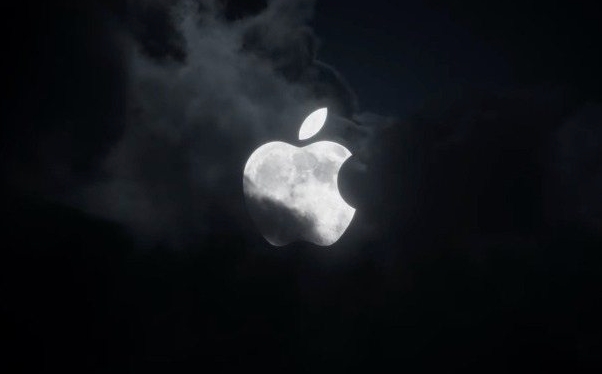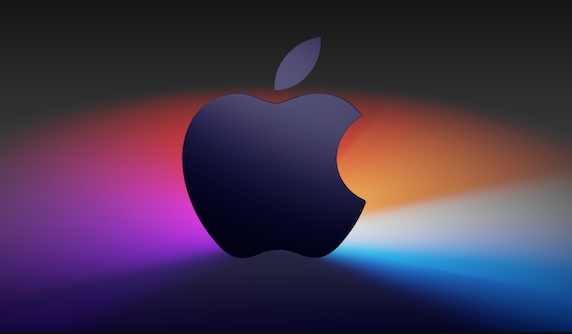How to force an update to the latest macOS?
To force the Mac to update to the latest version of macOS, you can check for updates through the terminal, download the installer from the Apple official website, or reset the software update settings. First, open the terminal and enter the sudo softwareupdate --fetch-full-installer command to check for updates; second, visit the Apple official website to download the corresponding installation package and install it directly; finally, if the update fails, you can delete the /Library/Preferences/com.apple.SoftwareUpdate.plist and /Library/Updates/ directory contents, and run sudo softwareupdate --clear-catalog and restart and try. Be sure to use Time Machine or external storage to back up data before updating, ensure network stability and reserve 15-20GB of space.

Forcing your Mac to update to the latest macOS isn't always straightforward, especially if you're waiting for a new version to show up in System Preferences. But there are reliable ways to make it happen — whether you want the newest features or need to install critical security patches.

Use the Terminal to Check for Updates Immediately
macOS usually checks for updates once a day by default, but you can force an immediate check using Terminal. This method is fast and works even if you don't see an update showing up in System Settings.

- Open Terminal (you can find it in Applications > Utilities).
- Type this command and press Enter:
sudo softwareupdate --fetch-full-installer
This tells macOS to look for the latest full installer available, which often includes major macOS versions.
If an update is found, you'll be prompted to download and install it.

Note: You'll need admin access to run these commands.
Download the Installer Directly from Apple's Website
Sometimes the built-in updater doesn't trigger because it thinks your system is already up to date — even when it's not. In that case, grabbing the latest macOS installer directly from Apple is a solid workaround.
- Go to Apple's official macOS downloads page (or search “download macOS” on Google to find the right one).
- Pick the latest version compatible with your Mac.
- Download the installer and double-click it to start the installation process.
This method bypasses the automatic detection system entirely, so it's great if you're trying to upgrade to a newer macOS version that your machine should support but isn't being offered.
Reset Software Update Settings If It's Stuck
If macOS refuses to check for updates altogether, resetting the software update settings might help. This involves clearing cached data and forcing a fresh connection to Apple's servers.
Here's what to do:
- Shut down your Mac.
- Turn it back on and wait for the desktop to load.
- Delete the
com.apple.SoftwareUpdate.plistfile located in/Library/Preferences/. - Also delete everything inside
/Library/Updates/.
After doing that, open Terminal again and run:
sudo softwareupdate --clear-catalog
Then restart your Mac and try checking for updates again through System Settings or Terminal.
Don't Forget to Back Up Before Updating
Before jumping into a forced update, make sure you have a recent backup. Something could go wrong during the process, especially if you're installing a beta or early release version.
- Use Time Machine to back up your entire drive.
- Or copy important files manually to an external drive or cloud service.
Also, keep in mind that some forced methods may end up downloading large files over your home network — so make sure you're on a stable Wi-Fi connection and have enough free space on your drive (at least 15–20 GB recommended).
Basically that's it.
The above is the detailed content of How to force an update to the latest macOS?. For more information, please follow other related articles on the PHP Chinese website!

Hot AI Tools

Undress AI Tool
Undress images for free

Undresser.AI Undress
AI-powered app for creating realistic nude photos

AI Clothes Remover
Online AI tool for removing clothes from photos.

Clothoff.io
AI clothes remover

Video Face Swap
Swap faces in any video effortlessly with our completely free AI face swap tool!

Hot Article

Hot Tools

Notepad++7.3.1
Easy-to-use and free code editor

SublimeText3 Chinese version
Chinese version, very easy to use

Zend Studio 13.0.1
Powerful PHP integrated development environment

Dreamweaver CS6
Visual web development tools

SublimeText3 Mac version
God-level code editing software (SublimeText3)
 How to check if Windows is activated and genuine
Jul 09, 2025 am 12:54 AM
How to check if Windows is activated and genuine
Jul 09, 2025 am 12:54 AM
1. Check the activation status in the settings; 2. Use the command prompt to check the activation status; 3. Check whether there are watermarks or restrictions; 4. Verify whether the system is genuine. To confirm whether Windows is genuine and activated, first open "Settings" → "System" → "About" → "Activate" to view the status, and it is normal to display "Windows is activated"; secondly, you can run the commands wmic and slmgr with administrator permissions to view the license details; if the desktop has a "Activate Windows" watermark, it means that it is not activated; finally, use "Windows Specifications" to confirm that the system type is retail or OEM version, and use Microsoft's official tools to verify the authenticity of the system.
 How to install Windows on a second monitor setup
Jul 17, 2025 am 02:42 AM
How to install Windows on a second monitor setup
Jul 17, 2025 am 02:42 AM
Connecting a second monitor when installing a Windows system will not affect the installation process, but the following things need to be paid attention to to ensure that the dual screens work normally: 1. There may be only one screen display during the installation process, and the main display device in the BIOS can be adjusted or the interface can be replaced; 2. After the installation is completed, select the display mode through Win P, and adjust the resolution, position and main display in the display settings; 3. If there is a black screen or unrecognizable situation, check the cable, update the driver or enter safe mode to reinstall the driver; 4. When using monitors with different resolutions, set the appropriate zoom ratio and enable the zoom repair option to optimize the display effect.
 How to back up my Mac before a macOS update?
Jul 15, 2025 am 12:33 AM
How to back up my Mac before a macOS update?
Jul 15, 2025 am 12:33 AM
Before updating macOS, you should back up your Mac. 1. Use TimeMachine to make a complete backup, insert the external hard disk and enable automatic regular backup; 2. Manually back up important files to cloud storage or external devices, and give priority to backing up documents, photos, bookmarks and other key information; 3. Create a bootable macOS installation disk for system repair or reinstallation, prepare a 16GB USB disk and run terminal commands to create. Backup can effectively prevent update failure or data loss, and it is more secure to prepare in advance.
 How to create a macOS bootable installer in Windows?
Jul 13, 2025 am 01:10 AM
How to create a macOS bootable installer in Windows?
Jul 13, 2025 am 01:10 AM
Making a macOS bootable installer on Windows is not officially supported, but can be implemented through third-party tools. First, prepare a USB drive above 16GB, macOS installation image (.dmg/.iso) and tools such as TransMac or balenaEtcher; secondly, use TransMac to right-click the USB drive and select "RestorewithDiskImage" to write the image, or use balenaEtcher to select ISO files and target disk to write; finally note that the USB drive must be in GPT format, and install Hackintosh, you also need to manually configure EFI boot and use boot tools to bypass restrictions.
 How to delete downloaded macOS update files to free up space?
Jul 20, 2025 am 02:04 AM
How to delete downloaded macOS update files to free up space?
Jul 20, 2025 am 02:04 AM
To clean macOS update files, you can manually delete the update packages in /Library/Updates and /var/folders, or use the terminal command sudorm-rf/Library/Updates/* to delete them, or use CleanMyMacX, DaisyDisk and other tools to clean up the system cache; however, be careful to confirm that the update has been completed before deletion and keep the necessary files for rollback.
 How to install macOS on a Dell laptop?
Jul 21, 2025 am 01:31 AM
How to install macOS on a Dell laptop?
Jul 21, 2025 am 01:31 AM
Installing macOS to Dell laptops is feasible but requires hands-on ability. 1. Prepare supported Dell laptops, USB drives, macOS environments and EFI files; 2. Use OpenCore or UniBeast to create a boot disk and adjust the BIOS settings; 3. Handle driver problems such as graphics cards, network cards, etc. when installing the system; 4. Use configuration tools to optimize EFI repair power management; 5. Pay attention to system update compatibility during daily maintenance and use the community to solve problems.
 How to roll back a macOS update?
Jul 09, 2025 am 12:50 AM
How to roll back a macOS update?
Jul 09, 2025 am 12:50 AM
You can return the macOS version, but the operation is complicated and risky. 1. Use TimeMachine to roll back the system: the premise is that the backup has been turned on and the complete mirror has been made. The entire system will be restored to a certain time point during operation, resulting in the loss of subsequent new data; 2. Manually reinstall the old version of macOS: you need to prepare to start the USB drive, erase the system disk and install the old version. The process is cumbersome and will clear all current data; 3. Data backup and precautions: No matter which method, you must back up the data in advance, pay attention to the limitations of the system version of different models, and Apple officially stops signing of the old version, and it will be difficult to downgrade, and the M series chip models are particularly limited.
 How to install macOS without an Apple ID?
Jul 14, 2025 am 01:19 AM
How to install macOS without an Apple ID?
Jul 14, 2025 am 01:19 AM
You can install macOS without using AppleID, but some functions are limited. There is no need to force login to AppleID during the installation process. You can create a local account to use the basic functions of the system. However, functions such as iCloud synchronization, AppStore download, and search for my Mac require AppleID to enable it. 1. When installing, you can use the USB drive to boot disk or recovery mode to create a local account; 2. Local account can browse web pages, edit documents, program development, and play media, but it is impossible to use iCloud and download most AppStore applications; 3. Skip AppleID to log in for the first time to create a local account; 4. Suitable for computer room equipment, development and testing, and privacy-sensitive users, and it is recommended to bind Apple to long-term use.







